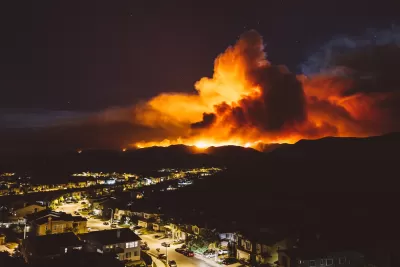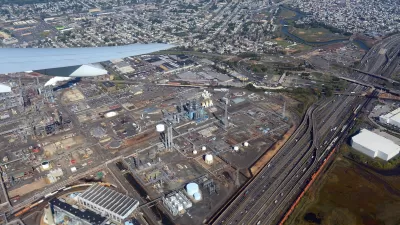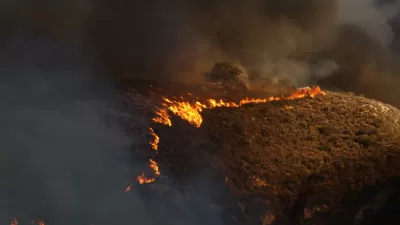More intense and widespread fires caused by climate change and changing air temperature are threatening more existing communities.

In an article for Source NM, Mojtaba Sadegh describes the worsening exposure of Americans to wildfire smoke. In the last two decades, close to 600,000 people were directly exposed to wildfires within 3 miles of their homes.
“Three-quarters of that 125% increase in exposure was due to fires’ increasingly encroaching on existing communities. The total burned area increased only 38%, but the locations of intense fires near towns and cities put lives at risk.” According to Sadegh, “Those statistics reflect how the number of people directly exposed to wildfires more than doubled from 2000 to 2019, my team’s new research shows.”
The analysis found 80 percent of wildfire exposure was, unsurprisingly, in the western states, with 70 percent of Americans exposed to wildfire hazards in California, despite the state only having 15 percent of burned areas.
The team found that, while development in the wildland-urban interface and unchecked growth is part of the problem, it only accounts for a small part of the increase in wildfire exposure. “Instead, three-quarters of this trend was driven by intense fires growing out of control and encroaching on existing communities.”
As the warming trend continues, wildfires will grow more intense and dangerous to existing communities. “Reducing emissions will help slow warming, but the risk is already high. Communities will have to both adapt to more wildfires and take steps to mitigate their impacts.”
FULL STORY: Human exposure to wildfires has more than doubled in two decades

Montreal Mall to Become 6,000 Housing Units
Place Versailles will be transformed into a mixed-use complex over the next 25 years.

Planetizen Federal Action Tracker
A weekly monitor of how Trump’s orders and actions are impacting planners and planning in America.

California High-Speed Rail's Plan to Right Itself
The railroad's new CEO thinks he can get the project back on track. The stars will need to align this summer.

In Dense NYC, What Does ‘Human Scale’ Mean?
Advocates reject the NIMBY label, arguing that they seek a more sustainable, incremental pace of growth modeled on mid-rise neighborhoods.

Nevada Legislature Unanimously Passes Regional Rail Bill
If signed by the governor, the bill will create a task force aimed at developing a regional passenger rail system.

How Infrastructure Shapes Public Trust
A city engineer argues that planners must go beyond code compliance to ensure public infrastructure is truly accessible to all users.
Urban Design for Planners 1: Software Tools
This six-course series explores essential urban design concepts using open source software and equips planners with the tools they need to participate fully in the urban design process.
Planning for Universal Design
Learn the tools for implementing Universal Design in planning regulations.
City of Camden Redevelopment Agency
City of Astoria
Transportation Research & Education Center (TREC) at Portland State University
Municipality of Princeton (NJ)
Regional Transportation Commission of Southern Nevada





























